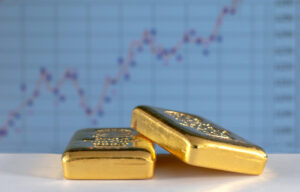Gold Price Shows There’s a ‘Big Short’ Going on in Official Currencies
The comments below are an edited and abridged synopsis of an article by Thorsten Polleit
On August 4, 2020, gold surpassed $2,000 per ounce. You could say that gold is on the rise, but it would be more accurate to say that the purchasing power of the world’s fiat currencies is on the decline, because this is what rising prices for gold and silver really mean: The higher the price of precious metals, the lower the exchange value of currencies.

It’s not only rising gold that shows the purchasing power of fiat currencies is declining. Basically, all other goods’ prices go up, most notably asset prices—stocks, bonds, housing and real estate. So you can buy fewer of these with a given currency unit. So, a broad-based debasement is going on as far as the world’s major currencies are concerned.
Most people prefer to hold money that doesn’t go down in value, money that preserves or increases its purchasing power over time. No one wants to hold inflationary money. Unfortunately, central banks have been debasing currencies for decades and the debasement is speeding up because of the consequences of the politically dictated lockdown crisis.
The world’s central banks print more fiat currencies to make up for lost income and profits. Against this background, rising prices of goods in terms of currencies can be interpreted in a meaningful way: A rise in the quantity of money will cause the exchange value of the money to go down—either in absolute terms or relative terms (that is, by keeping money prices at a higher level when compared to a situation in which the quantity of money has not been increased).
So people want to hold assets (stocks, housing, real estate, commodities) that are considered to be inflation protected. As they exchange currency for goods, the price of these goods increases, and higher prices are equivalent to a decline in the purchasing power of fiat. Financial traders will be the first to react and benefit, while others will lose out.
In a world where central banks not only ramp up the quantity of fiat but also push interest rates to zero, people get hit hard. Saving is made impossible. Artificially low interest rates also contribute to asset price inflation. Those holding fiat suffer losses in purchasing power, while people who hold assets that gain in price are on the receiving end.
Unfortunately, central banks’ inflationary policies will continue. There is an entrenched belief that an increase in the quantity of fiat currency will make the economy richer, and will help overcome financial and economic crises. This is a mistake; all an increase in the stock of fiat does is make some richer at the expense of many others. And inflation can only cover up economic and financial problems for so long.

Have a look at the increase, not adjusted for inflation, in the price of gold from 1970 to today (that’s 50 years). It has risen close to 50X.
How about the Dow from 1970 to today?: it has risen 35X (without reinvesting dividends, just nominally, and being invested the entire time)
How about price of average house in Toronto (which according to UBS is in a major bubble, worse than Paris)?: same as the Dow at 35X (excluding interest costs, repairs, property taxes, HVAC, insurance…have I missed anything???)
I rest my case for gold.